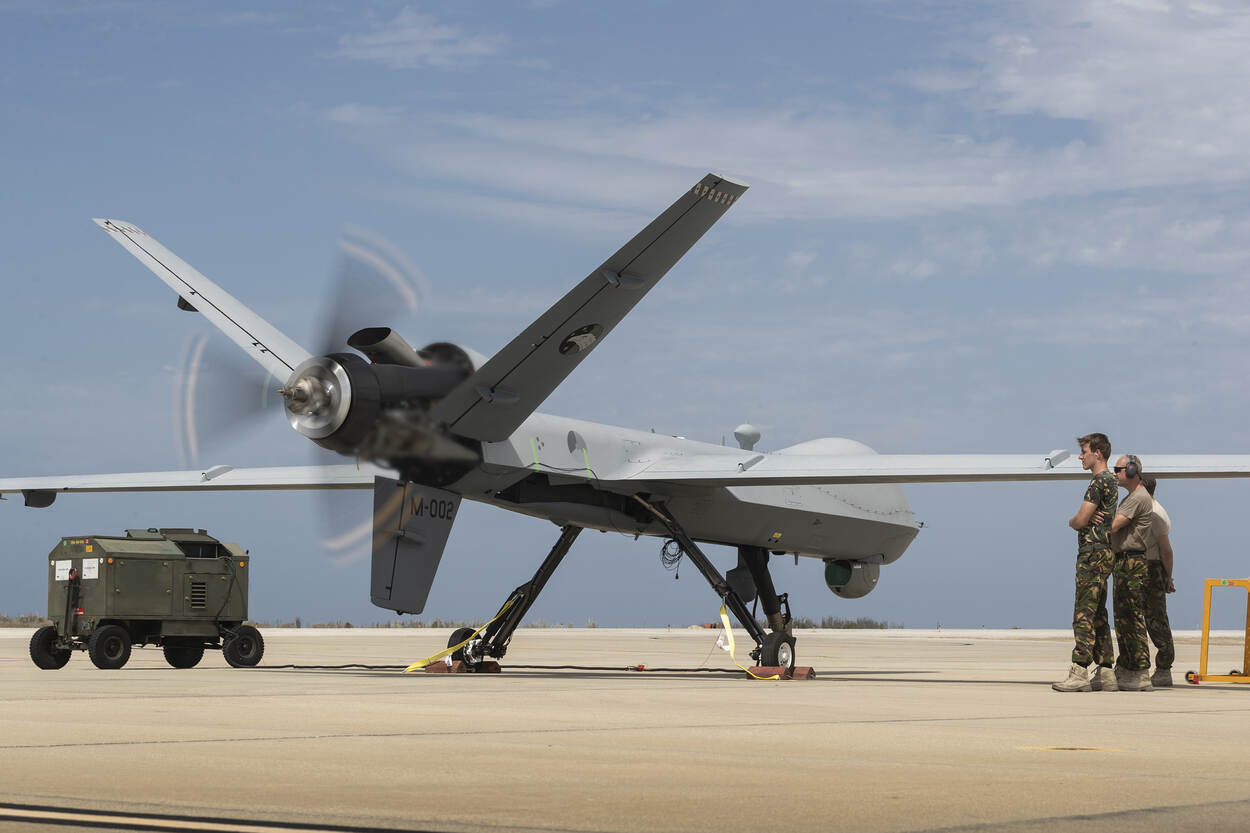Netherlands Minister of Defence Kajsa Ollongren today informed the House of Representatives in writing that next year, the Netherlands will station three MQ-9 Reaper drones in Romania to contribute to the defence of NATO’s eastern flank. The unarmed aircraft will be used to gather intelligence along the eastern border of Alliance territory. It will be the first time that the Netherlands deploys the unmanned reconnaissance aircraft outside its own territory. A team of army engineers will build the camp for their air force colleagues at the Romanian air base. The MQ-9s will assist in air shielding operations. The purposes of these operations include monitoring the situation at the border of Alliance territory. The unmanned aircraft will use their sensors to gather data and information in order to build and maintain an accurate picture of the situation.
While NATO will specify the intelligence that it needs, the Royal Netherlands Air Force will determine how it is gathered. The processing of intelligence will also remain a national responsibility. In addition to protecting NATO territory, Defence will gain experience in Allied operations as a result of the MQ-9 deployment, which will last for at least six months and twelve months at most. The total detachment will consist of 135 Defence employees. Around 40 service members will maintain the aircraft at the air base near Campia Turzii in Romania. The rest of the detachment will work at Leeuwarden Air Base. Their duties will include operating the MQ-9s and processing the intelligence gathered.

The General Atomics MQ-9 Reaper (sometimes called Predator B) is an unmanned aerial vehicle (UAV) capable of remotely controlled or autonomous flight operations, developed by General Atomics Aeronautical Systems (GA-ASI) primarily for the United States Air Force (USAF). The MQ-9 and other UAVs are referred to as Remotely Piloted Vehicles/Aircraft (RPV/RPA) by the USAF to indicate ground control by humans. The MQ-9 is a larger, heavier, more capable aircraft than the earlier General Atomics MQ-1 Predator and can be controlled by the same ground systems. The Reaper has a 950-shaft-horsepower (712 kW) turboprop engine (compared to the Predator’s 115 hp (86 kW) piston engine). The greater power allows the Reaper to carry 15 times more ordnance payload and cruise at about three times the speed of the MQ-1.
On 19 June 2013, General Atomics and Fokker Technologies signed a Memorandum of Understanding (MOU) to offer the MQ-9 Reaper to the Dutch government for their need of a MALE UAV. The MOU recognizes that Fokker will assist in maintenance and support of the aircraft in the Netherlands if a deal goes through. On 21 November 2013, the Dutch Minister of Defense announced that the Royal Netherlands Air Force (RNLAF) has selected the MQ-9 Reaper Block-V as its new MALE UAV. The new MALE UAV 306 squadron will be based at Leeuwarden Air Base. The Dutch MQ-9 is to have the Synthetic Aperture Radar with the Maritime Search option and also a special ground search radar with more range and electronic sensors to detect ground radar and signals. The RNLAF bought four ground stations and four MQ-9s Block-V. The aircraft are to reach full operational status in 2023. The decision was also made to arm the Reapers.












